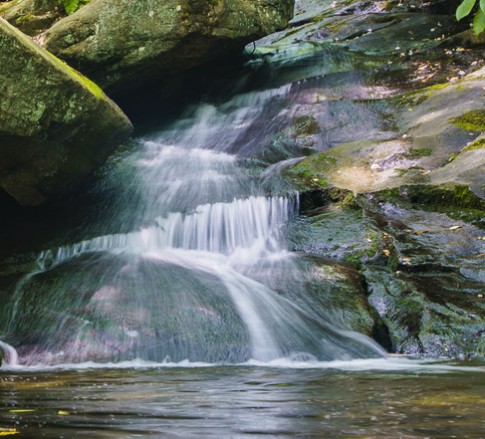U.S. Fish and Wildlife Service Proposes Critical Habitat for Two Central Appalachian Crayfish
February 18, 2020
BACKGROUND
In 2016, the U.S. Fish and Wildlife Service (“USFWS” or “Service”) listed the Guyandotte River crayfish as endangered and the Big Sandy crayfish as threatened. An explanation of those decisions and a map of their range in West Virginia, Kentucky and southwest Virginia may be viewed here. In 2018, the Center for Biological Diversity sued the USFWS to force the designation of critical habitat under the Endangered Species Act (“ESA”).
Now, the USFWS has resolved that lawsuit by publishing proposed designations of “critical habitat” for the two crayfishes. “Critical habit” is defined in the ESA as: 1) the specific areas occupied by the species at the time it is listed in which are found physical or biological features essential to the conservation of the species and which may require special management or protection; and 2) specific areas outside the area occupied at the time of listing if USFWS determines they are essential for conservation of the species.
The Service has solicited comment on 9 enumerated issues, including:
- Reasons areas should/not be designated, including whether the species are threatened by taking or human activity;
- Whether there are special management considerations or protections needed in designated areas;
- What areas unoccupied at the time of listing are nonetheless crucial for conservation of the species;
- Probable economic effects and benefits in including or excluding affected areas; and
- Whether the accompanying draft economic analysis is a reasonable estimate of likely economic effects.
Comments are due March 30, 2020 and requests for a public hearing are due March 13.
AREAS PROPOSED FOR DESIGNATION
For the Big Sandy crayfish, the USFWS proposes to designate over 20 segments of waters in the Upper and Lower Levisa Fork, Russell Fork and Tug Fork watersheds—an area that includes portions of three states:
The Guyandotte River Crayfish and habitat are entirely in West Virginia. The USFWS has proposed to designate five segments of waters in that watershed as critical habitat—only two of which contained any of the crayfish in 2016: Clear Fork (and its tributary Laurel Fork) and Pinnacle Creek. The other three segments are unoccupied, but the Service maintains that limiting its designation to the two occupied segments will not adequately protect the species, and that additional populations must be established within its historical range.
The unoccupied areas proposed are: the main stem of the Guyandotte from its confluence with its tributary Pinnacle Creek at Pineville, WV downstream 22 miles to its confluence with Clear Fork; Huff Creek and Indian Creek. The unoccupied segments were chosen because the Service has determined they contain suitable habitat and either link existing populations (which is true of the mainstem of the Guyandotte linking Pinnacle Creek and Clear Fork) or are located in refugia isolated from activities that degrade suitable habitat.
The features of necessary habitat include: 1) fast flows with unembedded slabs in 3rd order and larger streams; 2) natural flow variations sufficient to flush sediment transport and prevent embeddedness; 3) water quality (“e.g., pH, conductivity, dissolved oxygen) sufficient for normal growth, etc.; 4) adequate food base “indicated by a healthy aquatic community structure including native benthic macroinvertebrates …” connectivity to other populations; 5) habitats protected from activities that degrade the features in 1-4; and 6) interconnectedness between populations to “allow for gene flow within and among watersheds.”
ECONOMIC ANALYSIS
The Endangered Species Act requires the Service to consider the economic impact of habitat designation. The Agency determined that for water segments already occupied by either species there will be no incremental costs imposed by the proposed designation. In those areas, it concluded, the designation of habitat would not impose any costs or requirements on existing or planned projects that were not already imposed as a result of the listing decisions themselves. Accordingly, the only areas where a habitat designation could impose more costs than the listing decisions were the three areas currently unoccupied by the Guyandotte crayfish, but which are nonetheless proposed as critical habitat.
Those three areas are: a 22-mile segment of the Guyandotte, Indian Creek and Huff Creek. The Service estimated that the proposed designation would likely result in project modifications to one existing and one planned surface mine located on these streams. A copy of its economic analysis is here.
The Agency stated that examples of project modifications include sediment monitoring, chemical and macroinvertebrate testing, “installing box culverts at all stream crossings, co-locating valley fills or constructing regraded backstacks, and maintaining a spill response plan.” The USFWS also claimed that “informed by discussions with a mining company operating in the Guyandotte River crayfish occupied habitat (Clear Fork or Pinnacle Creek), the cost estimates [for] such modifications are projected to be relatively minor, ranging from $30,000 to $60,000 in the year of implementation.” We’re no cost experts on box culvert installation or valley fill construction, but these numbers seem pitiably low.



